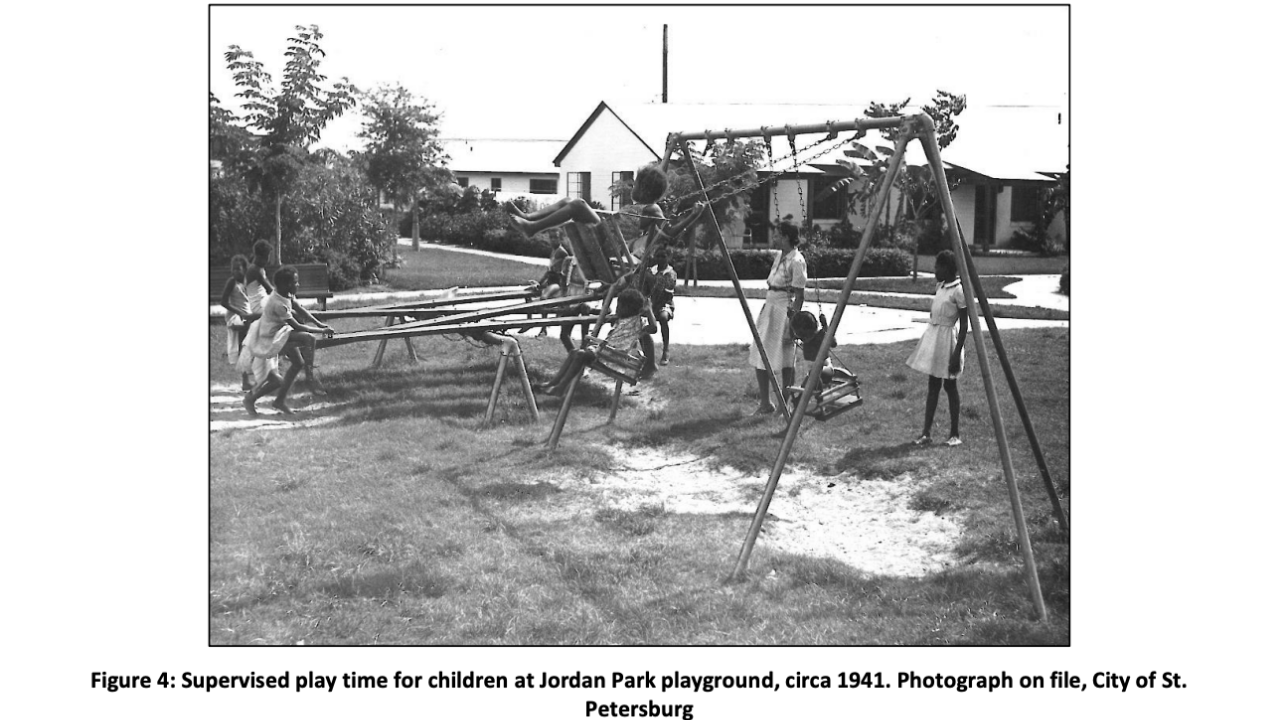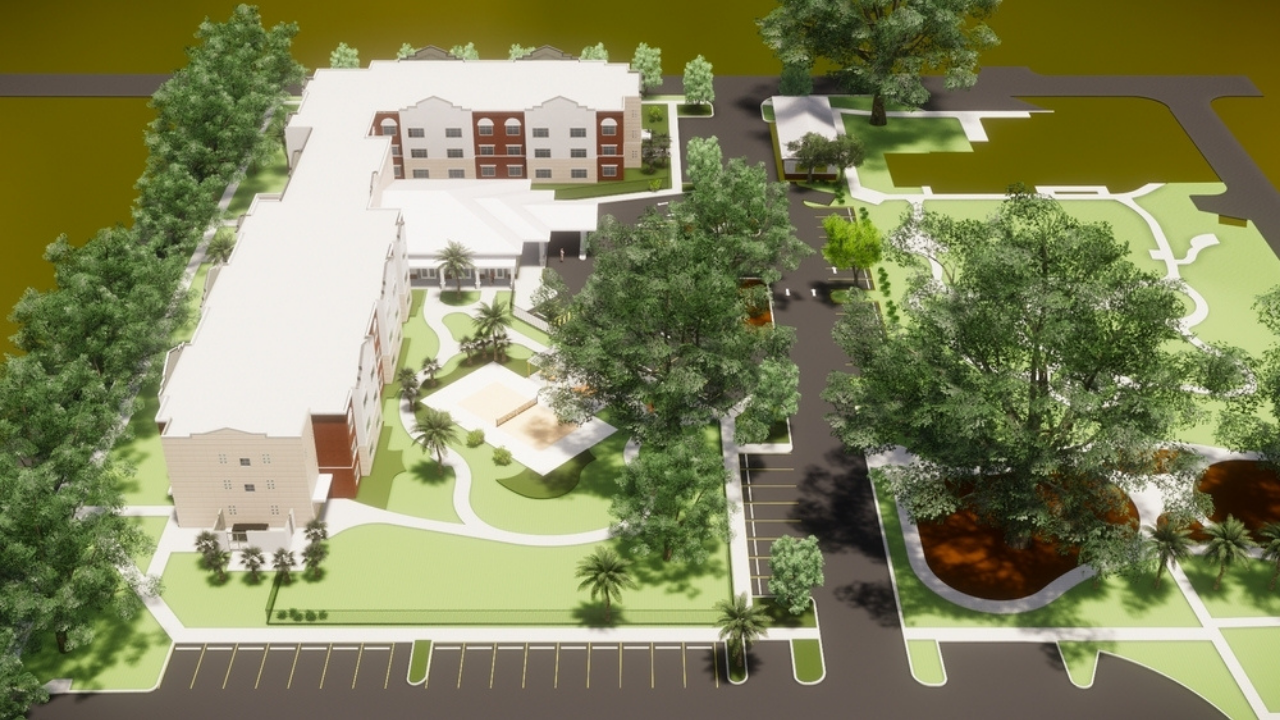ST. PETERSBURG, Fla. — Tucked in the neighborhoods of South St Petersburg, sits the city’s first African American housing community and the oldest federal public housing project in the state of Florida: Jordan Park.
“My first school was Jordan Park Elementary and my teacher was the Perkin and from there on things grew, and the interstate came through, so things have changed,” said Morris Wright who moved to South St Pete with his family in 1957, during segregation.
“You have your ups and downs, but you gotta learn. You gotta get through it and go for the best,” Wright recalled.
The Jordan Park community dates back to 1939.
“Jordan park is named after Elder Jordan, a local African American who in fact donated the land to the city of St. Petersburg to create safe and sanitary housing for negros during that time,” said Terri Lipsey Scott, Executive Director of the Dr. Carter G. Woodson African American Museum, which was the original administration building of Jordan Park.

“Most of the people who are here in St. Petersburg, particularly the African American community has passed through Jordan Park in one way or another,” said Joshua Johnson, Director of St Pete Housing and Community Development.
Over the decades, Jordan Park has seen changes from desegregation in the 1970s to reconstruction in 2000.
The only original units remaining are 31 homes known as the Historic Senior Village, which have sat vacant for several years now.


Today, the Historic Senior Village is first up in demolition as construction kicks off on the $93 million dollar redevelopment project recently approved by the United States Department Of Housing and Urban Development.
“Demolishing of 31 units of senior housing and reconstruction of 206 existing multifamily units and the construction of 60 additional units that will be occupied by seniors,” Johnson explained.
Jordan Park is owned and operated by the St. Pete Housing Authority, but the City of St. Petersburg contributed $2 million in TIF funds to the redevelopment project.
Scott said the housing renovations are bittersweet.
“I am saddened to see the loss of this extraordinary history, but in the face of what many call progress, we're looking to add 30 additional units to this community,” she explained. “And with that, in this housing dilemma, we have to look at it is this an opportunity to build upon the needs of the residents who need it most.”

Wright is one of those residents, struggling with homelessness. ABC Action News met him as he was walking to the St. Pete Housing Authority to ask for a senior unit.
“It's like everybody trying to get into Jordan Park, so you got to do what you got to do for housing,” Wright said.
According to a recent Harvard study, the cost of living in St Petersburg jumped nearly 25% in the last year, the third-highest increase in the country.
“What would it mean to you to get a place here?” we asked Wright.
“It would be a blessing,” he responded.
Unfortunately, even before the demolition is complete, the new housing is already full, much like other affordable housing in Pinellas County, many with up to five-year waits.
“Sadly enough, as soon as… units become available, they are also snatched up by those who need it,” Scott said. “I am excited that we are making available these wonderful opportunities of housing and I am hopeful that this is just the beginning of what's to come.”
Wright agrees and remains optimistic for an affordable home of his own in the future.
“Your blessings work in mysterious ways. So you gotta keep the faith and run the race,” he said.
The Jordan Park redevelopment project will be done in four phases and is expected to be completed by 2024.
Along 22nd Street near Jordan Park and the Woodson Museum is also the African American Heritage Trail, detailing the rich history of that corridor.
With that, the City of St. Petersburg is also investing tens of millions of dollars to redevelop 22nd Street, including two new parks, underground utilities, and re-doing the sidewalks.
“It will be thriving again. 22nd Street used to be the heartbeat of the African American community, the main corridor,” Johnson described. “We have started improvements with that, with the arts district just north and we would like to continue that all the way south into say 17, 18th Avenue South.”
The Woodson Museum also started a campaign this month to raise $27 million dollars for a much larger facility dedicated to African American history in St Pete. To donate, click here.
In-depth history of the Jordan Park area during segregation
According to a report by the St Petersburg Community Planning And Preservation Commission to make the Jordan Park Administration building a historic landmark in 2021:
"Adding to the segregation of business and residential zones that had existed in practice since almost the earliest days of St. Petersburg’s establishment, the City adopted a formal policy of racial zoning, which remained part of the City Charter from 1931 to 1971. Guidelines established by the Federal Housing Authority (FHA) for awarding development funds, including those being sought by the City of St. Petersburg may have had an influence on the adoption of these policies. The FHA’s guidance on the “Rating of Location” included the requirement that neighborhoods be evaluated in part based on the “protection against… a change in social or racial occupancy,” meaning that areas governed by rigid policies of racially segregated zoning were favored. Coupled with the desire to create a “beautified” downtown area that could be promoted to tourists, St. Petersburg’s now-strengthened policy of racial segregation resulted in the establishment and enforcement of the limitation of African American residential and business properties’ location to an area generally between 6th Ave. S. and 15th Ave. S., and 18th St. S. and 31st St. S. beginning in 1936. Known as the Deuces, a commercial “Main Street” emerged along 22nd St. S. as racially segregated zoning was put into effect and grew substantially during the 1950s.
Because Black residents were required to live and stay in their own communities after dark, African American owned and operated businesses, churches, and institutions developed to serve the needs of their residents. This contributed to the creation of a small Black middle class. By 1920, the African American labor force included 18 teachers, 10 grocery store owners, seven barbers, seven tailors, six ministers, four insurance agents, four restaurant owners, two doctors, one dentist, and one hospital superintendent which accounted for 6.7% of the local Black working population. The growth of the Black middle class during the 1910s and 1920s led to the establishment of a local chapter of the National Association for the Advancement of Colored People (NAACP) to defend against the worst of the racial discrimination. In counterpoint, the Ku Klux Klan, which championed white supremacy, grew increasingly active during the subsequent decades.
During this era, the Jordan Park Housing Complex was built in the African American community centered around 22nd St. S. With overcrowding and substandard housing conditions rampant in the city’s Black neighborhoods, reformers turned to the federal government for assistance in slum removal. The two phases of construction spanning 1939 through 1941 incorporated 446 apartments. Like the nearby school, the housing complex was also named for Elder Jordan, Sr., who had died in 1936. The public housing was a success with full occupancy. It provided improved housing to hundreds, but the all-Black complex also reinforced segregation and the “separate but equal” construction of facilities."





